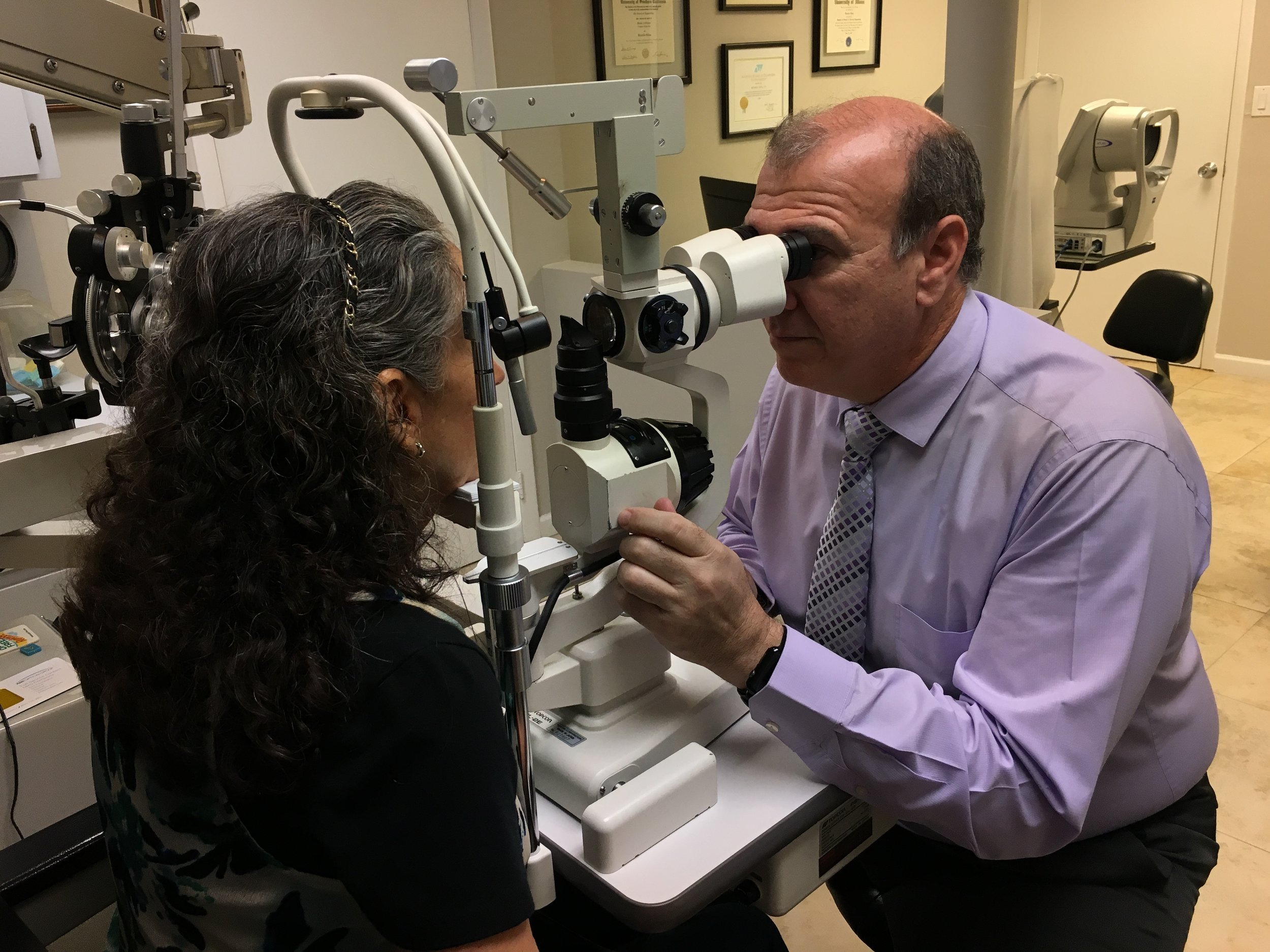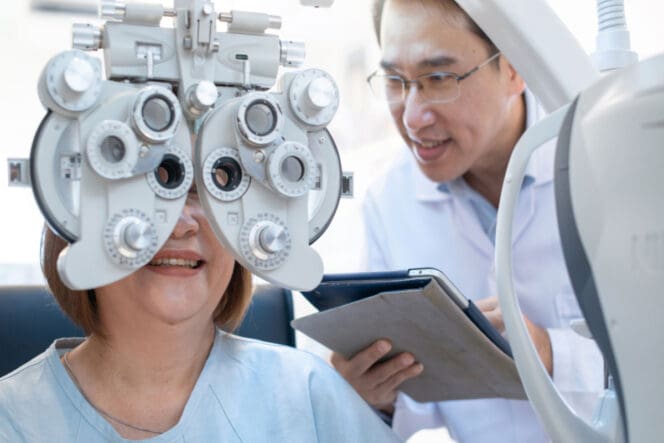Just How an Eye Doctor Can Transform Your Vision Health in Chino
Just How an Eye Doctor Can Transform Your Vision Health in Chino
Blog Article
Discovering the most up to date Technical Advancements in Optometry and What They Mean for Eye Doctors
From the precision of Optical Comprehensibility Tomography to the nuanced understandings offered by AI-driven diagnostic tools, these developments are setting brand-new criteria in individual evaluation and therapy. As these innovations penetrate the practice, eye doctors are faced with the difficulty of embracing these devices to boost patient outcomes.
Innovations in Diagnostic Equipment
Progressing the field of optometry, technologies in diagnostic tools have revolutionized the method eye care professionals analyze and detect eye problems and aesthetic problems. The previous years has actually experienced significant technological developments, allowing more detailed and accurate evaluations. Optical Coherence Tomography (OCT), for instance, supplies high-resolution cross-sectional photos of the retina, permitting the early detection of conditions such as glaucoma and age-related macular degeneration. This non-invasive imaging strategy has actually ended up being important in contemporary optometric practice.
An additional trick development is the introduction of innovative corneal topography systems, which map the surface curvature of the cornea with precision. These tools are specifically valuable for fitting call lenses and detecting corneal problems. Digital retinal imaging has changed traditional ophthalmoscopy, using thorough, scenic views of the retina that assist in thorough aesthetic exams.
The advancement of wavefront aberrometry has actually additionally been critical, making it possible for the evaluation of refractive mistakes with unparalleled precision (Eye Doctor). This innovation helps in tailoring corrective lenses and enhancing surgical results for refractive surgeries. Jointly, these analysis developments encourage eye doctors to supply exceptional individual care, guaranteeing very early intervention and tailored treatment methods, ultimately boosting aesthetic wellness outcomes
AI in Individual Monitoring
Structure on the foundation of advanced diagnostic devices, the incorporation of expert system (AI) in individual administration stands for a transformative jump for optometry. AI systems are progressively used to improve performance, accuracy, and customization in client care. By evaluating large amounts of data, AI can identify patterns and anticipate prospective ocular conditions, making it possible for eye doctors to customize interventions better. This capacity is important in taking care of chronic eye conditions such as glaucoma and diabetic person retinopathy, where very early discovery and continuous monitoring are key.
In addition, AI-driven systems promote streamlined patient interactions and administrative processes. Automated organizing, online examinations, and individualized follow-up plans not only enhance patient satisfaction but likewise enhance time monitoring for practitioners. These systems can triage individuals based upon the necessity of their conditions, ensuring that those in crucial requirement get punctual focus.
Moreover, AI enhances decision-making by providing optometrists with evidence-based referrals and therapy pathways. By integrating information from electronic health records, AI devices offer insights that educate scientific choices, decreasing the threat of mistakes and enhancing person outcomes. As AI proceeds to develop, its function in patient monitoring will likely broaden, improving the landscape of optometric care.
Advancements in Retinal Imaging
In the realm of optometry, retinal imaging has actually experienced impressive technical developments that are enhancing analysis capacities and person treatment. Innovations such as Optical Coherence Tomography (OCT) and fundus photography have actually changed exactly how optometrists imagine and analyze the retina.
Improved imaging methods like OCT angiography are additional refining diagnostic precision. This non-invasive strategy maps blood flow in the retina, offering critical understandings right into vascular wellness without the requirement for color shots. Additionally, adaptive optics modern technology is being incorporated right into retinal imaging systems to correct ocular aberrations, delivering more info here extraordinary image clearness. Such improvements promote the identification of minute retinal adjustments that can indicate disease development.
In addition, advancements in artificial knowledge are boosting retinal imaging by enabling computerized analysis of large datasets. These systems aid eye doctors in recognizing patterns a measure of pathology, consequently boosting diagnostic accuracy and effectiveness. Collectively, these advancements are changing retinal imaging right into a keystone of modern-day eye care, enhancing results and increasing healing opportunities.
Teleoptometry's Expanding Function
Teleoptometry is progressively becoming an important component of eye treatment, driven by developments in data and diagnostic devices. As optometry accepts digital change, teleoptometry promotes remote examinations, permitting optometrists to expand their services past standard boundaries. This is especially useful in country and underserved locations where accessibility to specialized eye care is typically restricted. By leveraging high-resolution video clip conferencing and progressed retinal imaging, optometrists can conduct extensive eye exams from afar, making sure timely diagnosis and therapy.
The combination of fabricated intelligence (AI) further boosts teleoptometry, allowing the evaluation of aesthetic information and aiding in the detection of ocular conditions such as glaucoma and diabetic retinopathy. AI-powered formulas can swiftly analyze complex imaging data, providing optometrists with valuable understandings that boost professional decision-making.
Moreover, teleoptometry sustains connection of treatment through smooth assimilation with electronic health documents (EHRs), allowing eye doctors to keep detailed person histories. When consulting with various specialists., this ensures that clients obtain tailored and constant care even.
Regardless of these advantages, challenges stay, consisting of making sure information security and handling patient expectations. Nevertheless, teleoptometry stands for a significant stride towards even more easily accessible, efficient, and patient-centered eye treatment. As modern technology advances, its role is poised to broaden even more.

Future Patterns in Eye Treatment
A myriad of innovative fads is established to improve the future of eye treatment, driven by technological improvements and the advancing requirements of clients. One significant fad is the assimilation of expert system (AI) in diagnostics, which assures to improve the precision and efficiency of eye assessments. AI algorithms can examine vast amounts of data from retinal photos, potentially finding problems like diabetic retinopathy and glaucoma earlier than conventional approaches.
Additionally, customized medication is obtaining traction in optometry, with hereditary screening notifying customized treatment strategies. This technique aims to enhance person outcomes by customizing treatments to individual hereditary accounts. Wearable innovation, such look at this site as wise contact lenses, is additionally on the perspective, using real-time monitoring of intraocular stress or sugar levels, therefore supplying continuous insights right into eye and systemic health and wellness.
The adoption of augmented fact (AR) and online reality (VIRTUAL REALITY) in training and person education is an additional emerging pattern. These modern technologies offer immersive experiences that can enhance understanding and skills both for clients and eye doctors. As these patterns progress, eye doctors must remain abreast of technological developments to offer advanced care, making sure improved client end results and satisfaction in the vibrant landscape of eye treatment.
Final Thought

Jointly, these diagnostic improvements encourage eye doctors to provide superior person treatment, guaranteeing early intervention and customized treatment strategies, eventually boosting aesthetic health and wellness results.

As these modern technologies continue to advance, eye doctors should adjust and include them right into technique, eventually optimizing operations effectiveness and boosting the standard of eye care provided to people.
Report this page